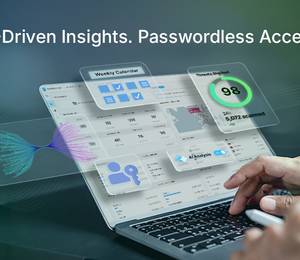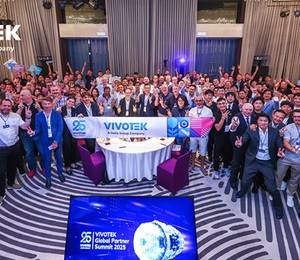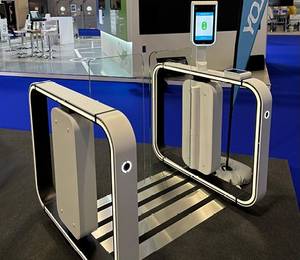During the pandemic, communicating with our colleagues is no longer as simple as walking up to their table. In the absence of corridor conversations and pantry chats, communication has – like most other things – went digital. But while digital communication can be convenient, it can also be confusing. Communication can become complicated with multiple avenues of emails, video calls, voice calls, instant messaging, and more.
Thus, the solution – Unified Communications (UC). UC, as defined by audiovisual automation and integration equipment distributor Creston Electronics, “provide and combine multiple enterprise communications channels, such as voice, video, personal and team messaging, voicemail, and content sharing”. What des the existence of UC mean for companies in an age of hybrid work? And how can they safeguard against potential pitfalls? Executive Vice President of Creston Electronics, Jacques Bertrand, discusses.
What are the benefits of UC?
UC can help teams improve productivity, as team members can connect however they feel most comfortable, using any device or medium they choose. UC also reduces costs. Because UC systems operate on the cloud, they allow companies to shift away from a Capex model, to an OpEx strategy with fewer initial expenses. UC enables stronger performance since employees can both communicate and collaborate in an instant. They can solve customer problems faster and improve your business reputation. UC also offers an enhanced user experience by giving people more freedom to work as they choose. A good UC strategy can delight your employees and even reduce turnover in your organisation.
What are some trends you expect to see in UC in the near future?
Customers are looking to video enabled spaces more than ever, driven from the remote work push. By 2025, the number of video conferencing devices including room-based endpoints, USB room devices, and personal video communication devices will be six times as high, reaching 12.5 million units – according to Frost and Sullivan.
Since more people are working from home, there is a necessity for meeting rooms to be a more immersive experience to every person in the call and to ensure equal footing across all participants. AI technology will provide more engagement and immersion to every conferencing experience, with the development of features such as intelligent object detection. This will allow for better computing vision as every object in the room is tracked and optimally lit to achieve perfect lighting. We’ll also see the introduction of smart camera controls which help to track people who are present in the video conference through automatic camera panning. Remote work has raised our expectations of what video conferencing should look like, and technology such as UC can help us be more productive, involved, and connected to the people we work with.
Why should homeowners think about implementing Unified Communications in their homes and offices?
It is imperative to transform the home office into a professional environment if it is going to be used for calls and meetings, as most virtual discussions require focus and attention to detail. This means hardware needs to improve to support better audio quality and video quality, so that they are comparable to a meeting room for any individual at home. Now that WFH is a reality that will continue beyond the pandemic, it is crucial that we empower people who are working from home with the right equipment to assist in the necessary business conversations that will take place while working from home.
Creating a smart home and office ecosystem can benefit users in more ways than one. An ideal smart home or office ecosystem is one where the devices connect and integrate with other devices in the system seamlessly, and allows users to control the devices remotely and work in harmony with their lifestyle, rather than disrupt it. At Crestron, we understand the intuitive experience that our clients demand and are committed to continually upgrade our portfolio to suit their needs. We have applied full force of our unparalleled engineering resources and expertise to make Crestron Home the best smart and customised home and office experience for our customers.
With hybrid working arrangements becoming more popular during the pandemic and being likely to stay on, how can UC help ensure seamless work whether you are at home or in the office?
Unified Communications help to simplify communications in a hybrid work environment by providing a selection of platforms tailored to organisations. The right UC platform gathers everything your employees need to connect, share, and work together in one streamlined interface. Remote working is now easier than ever - organisations must keep up with the increase in quality of meeting rooms and offices in order to retain and attract valuable employees, which remains a top priority in many enterprises. The way to enable that is to transition to technology that can help employees perform at their best, especially during turbulent times.
What are some of Creston’s products that can be beneficial in a hybrid work environment?
Crestron saw the need to adapt our product offerings to enable a seamless work from home experience. The tabletop Mercury Mini allows users to have a superior audio experience from the precision-engineered speaker and microphone.
For homeowners that adopt Crestron Home solutions, all their devices in the home can be controlled with ease on one intelligent platform. Users can control the temperatures in their homes, turn on lighting remotely, and even access streaming services such as Netflix and Hulu through the platform. Continuous system feedback on mobile devices confirms the status of door locks and alarms, the exact positions of gates and garages, and provides real-time views of cameras. The home is instantly transformed to be more secure, comfortable, and convenient.
Our Crestron Flex solution provides access to video conferencing, content sharing, scheduling, meeting management, and even support, which are all features integrated into the platform with one singular goal - to deliver a consistently excellent experience that can empower users to be able to communicate effectively and productively in groups. All of our products empower hybrid work environments, because we offer flexibility and security so our customers can deliver on productivity.
A common concern facing businesses is the possibility of data being compromised when employees are working from home, as the networks at home may be less secure. How does Creston address this with its solutions for hybrid work?
Security today is more than just the enterprise network and working to keep malicious attacks at bay. The devices themselves must be secure and offer a layer of protection - which is driven from the use of mobile devices that connect to corporate networks as well as the local coffee shop network. Thus, users expect access to all the same tools anywhere they work from.
Crestron offers an extra layer of security through encryption, certification, and authentication technologies so that customers can use their devices anywhere with peace of mind. We provide enterprise-grade security through the use of many technologies in our products. AES Encryption ensures secure transmissions, which is the same protocol that banks use to protect transactions on the Internet. We also employ Active Directory, which is a centralized credential management that ensures that only authorized users gain access. Furthermore, PKI Authentication is required when simple passwords are inadequate to confirm the identity of the parties involved in a particular action or communication, and to validate the information being transferred.
What advice do you have for homeowners who may be participating in hybrid work – how can they protect their servers from cyber threats?
In a nutshell, homeowners can start protecting themselves and their devices by securing accounts with passwords, using the security software built into their routers, and purchasing products from companies that focus on creating secure solutions.
When setting up a Wi-Fi router, it’s paramount to create a strong password for your Wi-Fi network. Choose a unique password that’s not used on any of your other devices or accounts, and use it only for your network. You should also use WPA2 encryption (located in your router settings) and enable any firewall that’s available to your devices.
The most surefire way, however, is to use only reputable smart home technology brands. Smart home technology products like the Crestron Home enables continuous system feedback on our mobile device, which confirms the status of door locks and alarms, the exact positions of gates and garages, and provides real-time views of cameras. Crestron Home also allows you to control everything at ease with one intelligent platform, which has the additional benefit of making your home both secure and convenient.
Are threats facing smart offices any different from that of smart homes? If so, how can they be addressed?
Threats can be similar in the Smart Office and Smart Home, but generally speaking, in the Smart Home, we are using services like cloud storage and cloud UC services, just like we do in the office.
This means that there is a minimal amount of data stored in the Smart Home. However, despite this, security must be robust as attacks may still penetrate the networks through connected devices within the Smart Home network. Therefore, in both situations, security threats still exist and must be addressed and protected against.












